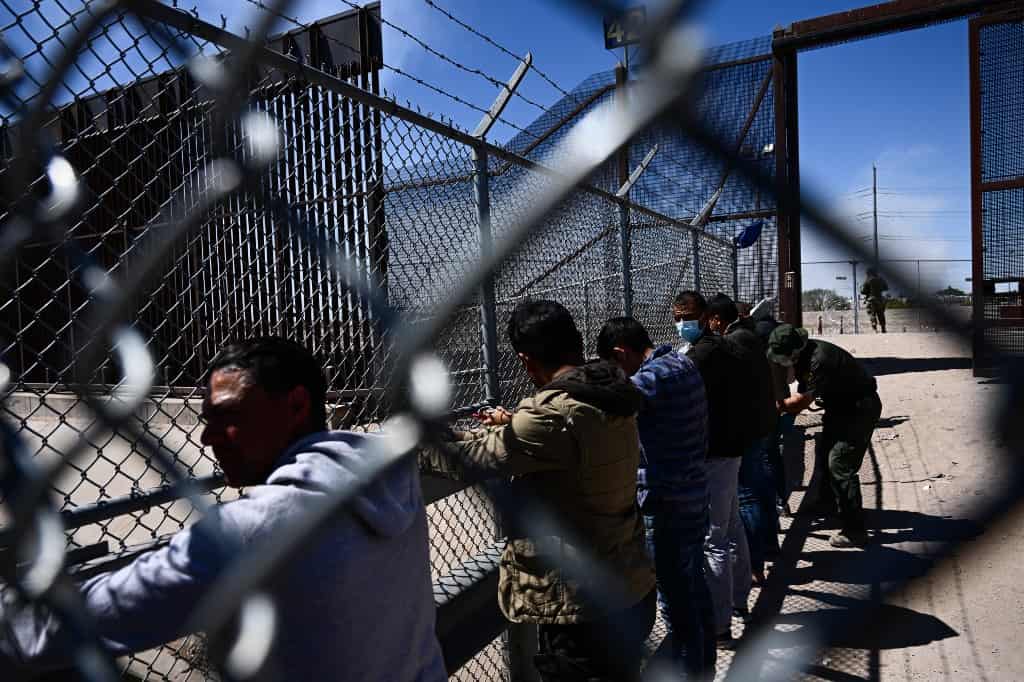Under the intense desert sun, among sand and brush, hundreds of migrants crossed the Rio Grande from Mexico on the rumor that the United States would let them in. But their hopes were dashed as they were once again prey to misinformation.
Falsehoods and deceptions add to the ordeal of these people, first to reach the border through Mexico and then to obtain asylum in the United States.
With sandals and children in their arms, several groups crossed the river last Thursday from Ciudad Juarez (north) in search of “gate 40” of the border fence.
Word of mouth and social media reports claimed that the U.S. government had opened this gate to process asylum applications. But the gate was never opened.
“Yes it can. I turned myself in through gate 40 with my family and they let us all go (…). They don’t ask questions,” noted a post in a Facebook group, alluding to the practice of taking cover from the border patrol and asking for protection. AFP found dozens of similar conversations.
On the other side of the river, on U.S. soil, some 1,000 people from Venezuela, Haiti, Ecuador and Turkey were set up in tents and shelters – improvised with sticks and blankets – waiting for days to turn themselves in.
They wanted to cross before Friday, when Title 42, a rule applied by the last two U.S. administrations to prevent the spread of covid-19, but which in practice served to expel to Mexico almost all migrants arriving without papers, will cease to be in force.
In its place, Title 8, a specific immigration regulation that provides for deportations and the denial of asylum to violators, who will be banned for five years and face criminal prosecution, will remain in place.
This year, thousands of migrants have mobilized about five times at the border, pushed by disinformation, behind which anti-immigration groups and even human traffickers are said to be involved, according to experts.
Chain of lies
In March they attempted to cross an international bridge on the rumor that they would be given passage for a supposed “migrant day”.
Texas Customs and Border Protection (CBP) reported another attempt by “more than 1,000” people, mobilized by similar versions following the fire that killed 40 foreigners at a migrant detention center in Ciudad Juarez on March 27.
In February there had already been a rumor circulating that those who turned themselves in would be taken to Canada. Angel Pavon, a 52-year-old Venezuelan, was one of the nearly 500 migrants who believed it and settled next to the wall.
Pavón turned himself in with his wife and daughters, ages 14 and 12, but they were expelled to Mexico. “They threw away the three things we had (…). They made the girls cry because they treat you like a terrorist.”
Heartbroken, he focused on the mobile application CBP One, enabled by Washington to request appointments from Mexico in which migrants can apply for asylum.
His wife got her turn and is waiting for family in the United States.
The rumor that Canada had opened its doors arose after the New York authorities decided to pay bus tickets to migrants seeking to reach that country from that city.
Also, after the broadcasting of a video in which a man covered in snow said: “The new fashion is Canada (…). They are not asking for papers”.
Criminal factor
In the face of the continuous collapse of CBP One, groups have been created on Facebook and WhatsApp where migrants share experiences about the mobile application, but falsehoods also slip in there.
Landon Hutchens, a Customs and Border Protection official in El Paso (Texas), refers that “criminal organizations are also driving” the disinformation.
There have been identified TikTok accounts in which supposed human smugglers and “migration consultants” offer their services and decontextualize information. Migrants themselves share these contacts with each other on Facebook.
Migrant smuggling is also “a business whose communication strategies mostly use disinformation,” says Olivier Tenes of the International Organization for Migration.
TikTok also offers supposed appointments at CBP One. Testimonies gathered by AFP confirm that these are scams.
The false information also comes from “extremist groups seeking to generate chaos and an anti-immigration narrative,” says Sam Woolley, a researcher of persuasion and social networks at the University of Texas.
For Enrique Valenzuela, in charge of attention to migrants for the government of Chihuahua (north), these people are susceptible to disinformation because “they are left with the part [of the message] that generates hope”.
In Ciudad Juarez night falls and in front of “gate 40” the migrants remove their tents and form lines when they see three agents on the other side. But the gate remains closed.

